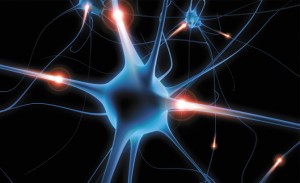By Dr. Daniel Pero –
 Neuropathy is a medical condition that is translated from Latin as “nerve disease”. There are many types of neuropathy that can be found throughout the body. Neuropathy that begins in the hands and feet or other parts of the extremities is considered peripheral neuropathy. This can present as symptoms of numbness, tingling, sharp and shooting pains, and unusual sensations like “pins and needles” referred to paresthesias, or a combination of these.
Neuropathy is a medical condition that is translated from Latin as “nerve disease”. There are many types of neuropathy that can be found throughout the body. Neuropathy that begins in the hands and feet or other parts of the extremities is considered peripheral neuropathy. This can present as symptoms of numbness, tingling, sharp and shooting pains, and unusual sensations like “pins and needles” referred to paresthesias, or a combination of these.
The more common causes of peripheral neuropathy are diabetes mellitus, alcoholism, vitamin deficiency, and sometimes a tick-borne infection called Lymes’ Disease. Diabetes is by far the most common and can lead to open sores that can lead to non-healing wounds that are susceptible to infection. It can also cause difficulty in walking which can predispose people to falling. Painful diabetic peripheral neuropathy (PDPN) can cause severe, debilitating pain.
Typical Treatment for Symptoms of Peripheral Neuropathy
Traditional treatments for peripheral neuropathy have been composed of conservative therapies, pharmaceutical drug therapy, and nerve decompression surgery to relieve pressure around the nerves from surrounding body structures. Conservative treatments have consisted of trans-electrical nerve stimulation (TENS) devices that can be used at physical therapy or in the home. Some devices include garment devices that can be worn on the hands or feet during treatment. Anodyne therapy is a similar modality but it uses pulses of light energy directed into the body rather than electric current. Unfortunately, these modalities can sometimes only offer temporary relief of pain and require regular application. Over-the-counter topical products such as Capsaicin can also provide relief when applied.
Recently, there has been an increase in combination topical pharmaceutical drugs, manufactured in a compounding pharmacy, that are safer because they have less systemic absorption than oral medications. Topical anesthetic patches are common as well. Oral medications include prescription narcotics, such as opiate-containing drugs like codeine, which can lead to dependence, constipation, or sedation. Non-narcotic pain medications such as tramadol are also used.
Other oral medications such as anti-seizure medications (gabapentin) and tricyclic anti-depressants (amitryptiline) have been used off-label for neuropathy symptoms. The only FDA-approved prescription medications for PDPN on the market today are Lyrica (pregabalin), an anti-seizure medication; Cymbalta (duloxetine), a serotonin and norepinephrine reuptake inhibitor anti-depressant; and Nucynta (tapentadol), an opioid agonist which also has an extended release formula, and has been associated with less “drug-seeking” behavior than other opioid narcotic medications. Of course, all of these may have side effects and adverse events that may make them unsuitable or undesirable for some patients. Nerve decompression surgery is usually reserved after all conservative efforts have failed, but has had promising results when performed correctly, and should only be performed by surgeons with proper training.
Safer Treatments to Reverse the Disease of Neuropathy
All of the above treatments help relieve the symptoms of painful neuropathy. None of them address the various types of disease processes within the nerve which cause the symptoms of neuropathy. Below are some natural supplements and advanced technology that used simple physics that have been shown to reverse the disease and reduce symptoms. In the case of diabetic neuropathy, regulations of blood glucose levels are imperative, regardless of treatment modalities used.
Vitamins and supplements have gained increasing popularity in sufferers of neuropathy, and have decreased symptoms of numbness, tingling, and pain. They have also been shown microscopically to regenerate small fiber cutaneous nerves in the skin. These include combinations of vitamin B12, B6, folate, and alpha-lipoic acid. They are available over the counter, or prescription strength formulas are available through a physician, and are considered a “medical food” by the FDA.
A more recent supplement in the U.S. that is also considered a medical food by the FDA is called benfotiamine, a lipid-soluble derivative of vitamin B1 (thiamin), and has been studied extensively throughout the world to reduce the harmful effects of glucose metabolites on small blood vessels that feed peripheral nerves. It is believed that benfotiamine utilizes several mechanisms of action to improve health of the nerves and therefore decrease symptoms of diabetic neuropathy.
Another natural therapy that has been shown to reverse the symptoms of painful diabetic neuropathy is biomagnetism. Since 1975, multipolar static magnetic insoles have been used in Japan and 37 other countries to help reverse symptoms of neuropathy in the feet. The first study in the U.S. was by Michael Weintraub, MD, a professor of neurology at New York Medical College. It was a multi-center (48), randomized, double-blind, placebo-controlled study published in 2003 in Archives of Physical Medicine and Rehabilitation. It showed a reduction in pain and increased quality of life in diabetic patients with painful neuropathy over time with the consistent use of these magnetic insoles. This study showed comparable or superior results to studies on the use of gabapentin, tramadol, and lamotrigine, but without the side effects. They also concluded that more studies are needed to investigate whether permanent changes occur to these nerves with use of these devices.
Dr. Pero and Dr. Michel at the Integrative Foot & Ankle Center in West Palm Beach offer all modalities of treatment for peripheral neuropathy as discussed above. And we are very excited to offer these new and safer nutritional and physical methods of treatment for painful diabetic neuropathy in the office. Our benfotiamine supplement has the highest quality laboratory standards and is only available by physicians. We dispense the same magnetic insoles made from the same manufacturer of the insoles used in the study mentioned above. To see a video on Dr. Weintraub’s study and his patients, please visit our website www.integrativefoot.com and click on the Facebook link.
Call the office to schedule a consultation today at (561) 293-3439.
Check Also
Physical Therapy for the Brain
Have you noticed you have difficulty hearing your family and friends in a noisy restaurant? …
 South Florida Health and Wellness Magazine Health and Wellness Articles
South Florida Health and Wellness Magazine Health and Wellness Articles




